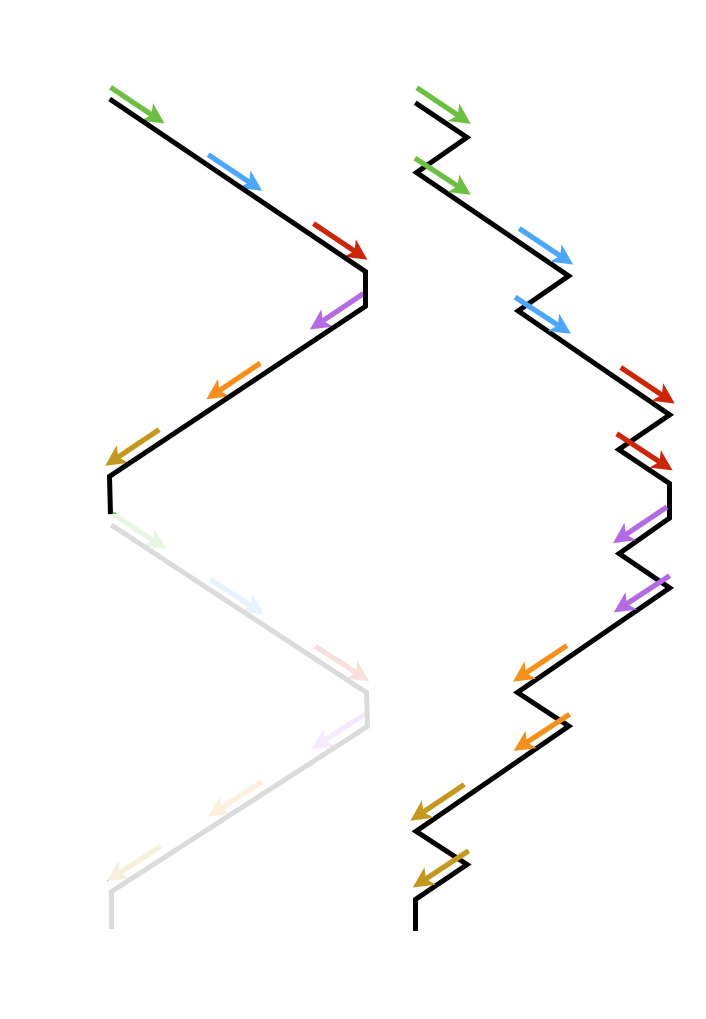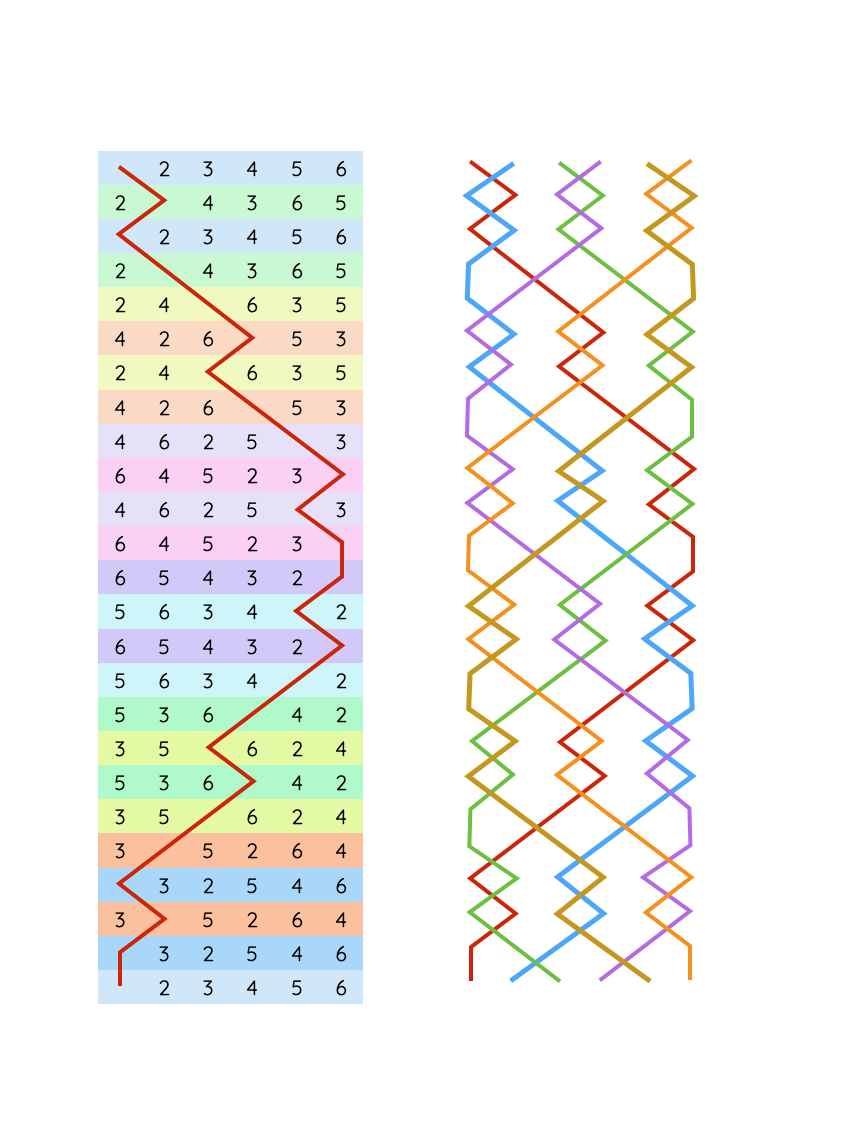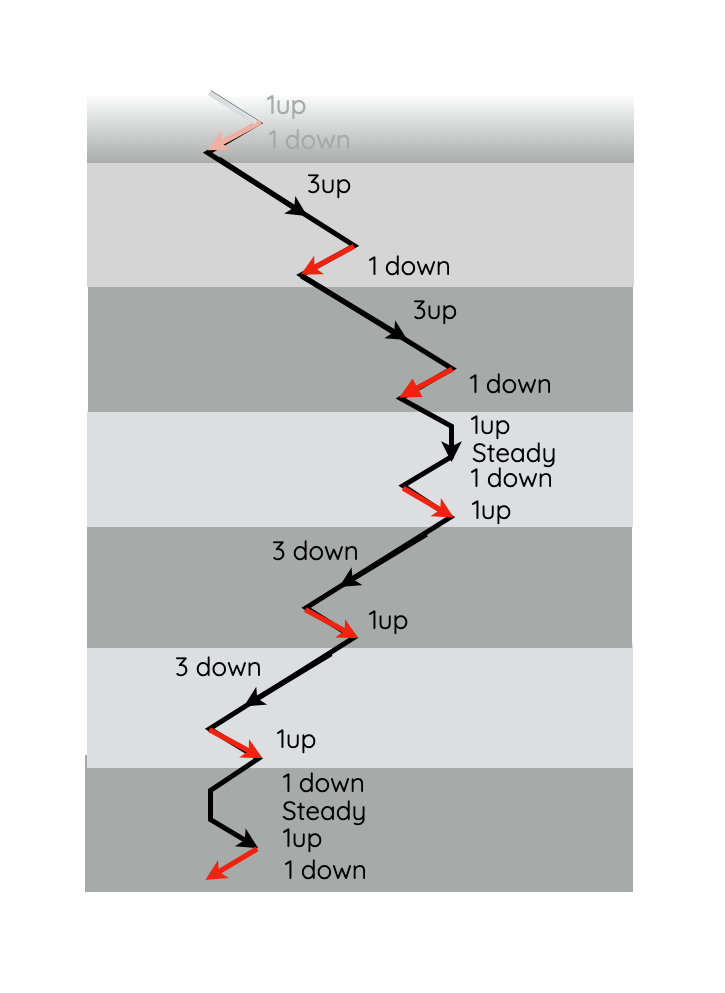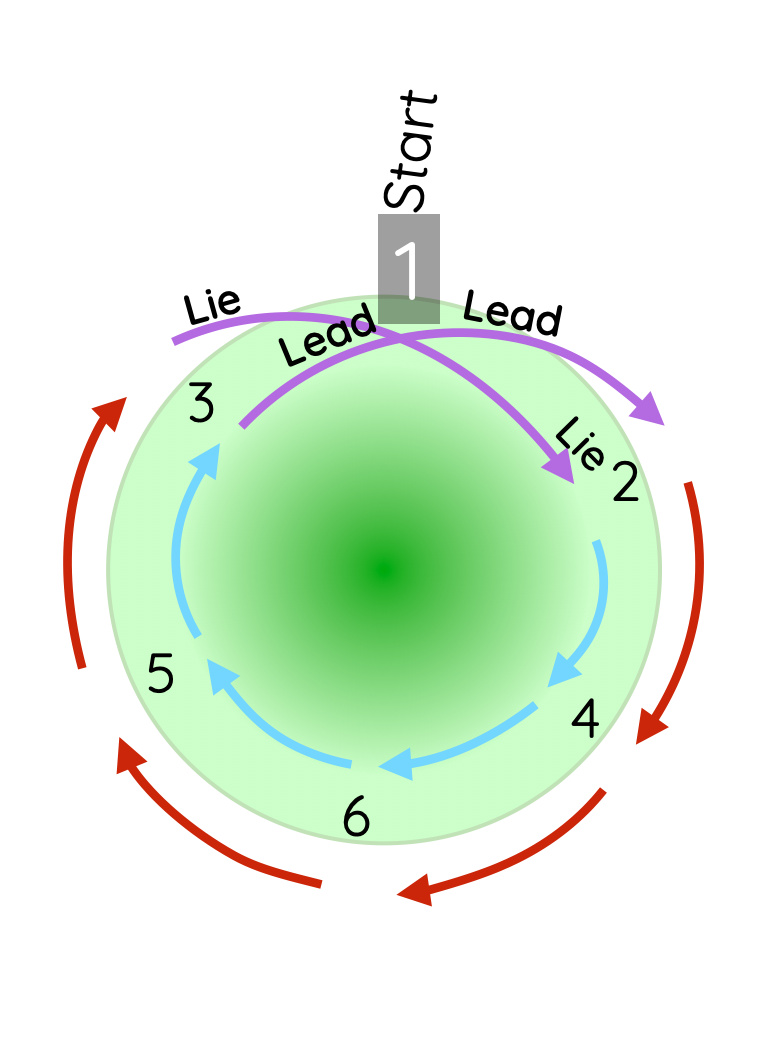
What is Treble Bob?
In Treble Bob, Surprise and Delight methods the hunt bell ‘treble bobs’.
It is actually remarkably similar to plain hunting except that every pair of places is repeated…
The treble is leading at the back-stroke before starting and moves to seconds place at the first hand-stroke…
This is then repeated… lead at back-stroke and move to seconds place at hand-stroke.
Next… it continues on to 3rds and 4ths place… back-stroke and hand-stroke and then repeats…
and the same in 5th and 6th place before lying as normal to turn around and repeating the process on the way back.

Twice as long...
The result of treble bobbing is that because everything is repeated, it takes twice as long…
Plain hunt on 6 bells is 12 changes long… 1st – 6th on the way up and 6th – 1st on the way down, where as treble bob takes 24 changes.
We can practice treble bob hunt just like we do for plain hunt, but unlike plain hunt which is also known as Original… treble bob is not something we would want to extend as every changes is repeated 2 blows later! This means it breaks the fundamental rule of change ringing that you should not repeat changes.

Repeated Rows
When you ring treble bob hunt, all rows are duplicated.
This can be seen in the colour coding of the duplicated rows
In the lines diagram, it can also be seen how all bells dodge at the same time and hunt at the same time.
Treble bob is used instead of hunting in Surprise, Delight and Treble Bob methods… however, it is only the treble that will treble bob hunt and all other bells weave a more complex pattern.
As a result, the repeated rows do not occur.

Ringing by Rhythm
When plain hunting, we know we ring slower when hunting up and quicker when hunting down, with a normal length pull as we turn around – lying or leading.
In treble bob the rhythm is a little more complicated… You could think of it as breaking up into blocks of fours changes.
This will be 3 blows of plain hunt, followed by one blow in the opposite direction… e.g. 3 slow and 1 quick when going up or 3 quick and one slow when coming down.
When lying or leading you will change direction. The direction change occurs across the set first 3 blows… so one quick, one normal, one slow (or vice versa) and the final blow of the block is still an opposite… one quick.

Dodge and pass
The final observation is that you will alternately dodge and pass bells.
Dodge with first and pass the second…
Dodge with the third and pass the fourth
Dodge with the fifth and lie to dodge with the first again.
Pass the second and dodge with the third
Pass the fourth and dodge with the fifth.
Lead and start again!

Coursing Order
The coursing order for treble bob hunt is the same as for plain hunt… but of course with repeats at each step…
So you can use the same diagram as for plain hunt and the bells will come down to lead in the same order.
Even bells lead first starting with the smallest… followed by odd bells starting with the largest.
2, 4, 6, 5, 3, 1
So the fourth bell courses the second, i.e it will always be one step behind…. So when the 2 moves up to 3-4, the 4th will be in 1-2. By the time the 2 has got to 5-6, the fourth will have reached 3-4.

Coursing Order (cont.)
- Starting at lead, we follow 2 and go back place…. to lead at backstroke.
- Three places forward, pass, 2, 4, 6… then one back over 4 to complete the 3-4 dodge.
- Continue three places forward 6, 5, 3… then back over 5 to complete the 5-6 up dodge.
- Continue with 3, 2, (lying) then 4 to start the return, but then back one over 2 to complete the 5-6 down dodge.
- Continue with 4, 6, 5 and then back over 6 to complete the 3-4 down dodge.
- Finally, continue on with 5, 3, Lead, then black of 3 to complete the 1-2 dodge… before leading full to end.
Because it is false from change 2 onwards, Treble Bob Hunt is not a real method or principle. By adding places in 3-4 instead of a dodge, it is possible to create a principle which is not false… It is called Forward and can be rung on any even number of bells and is very closely related to Original.
